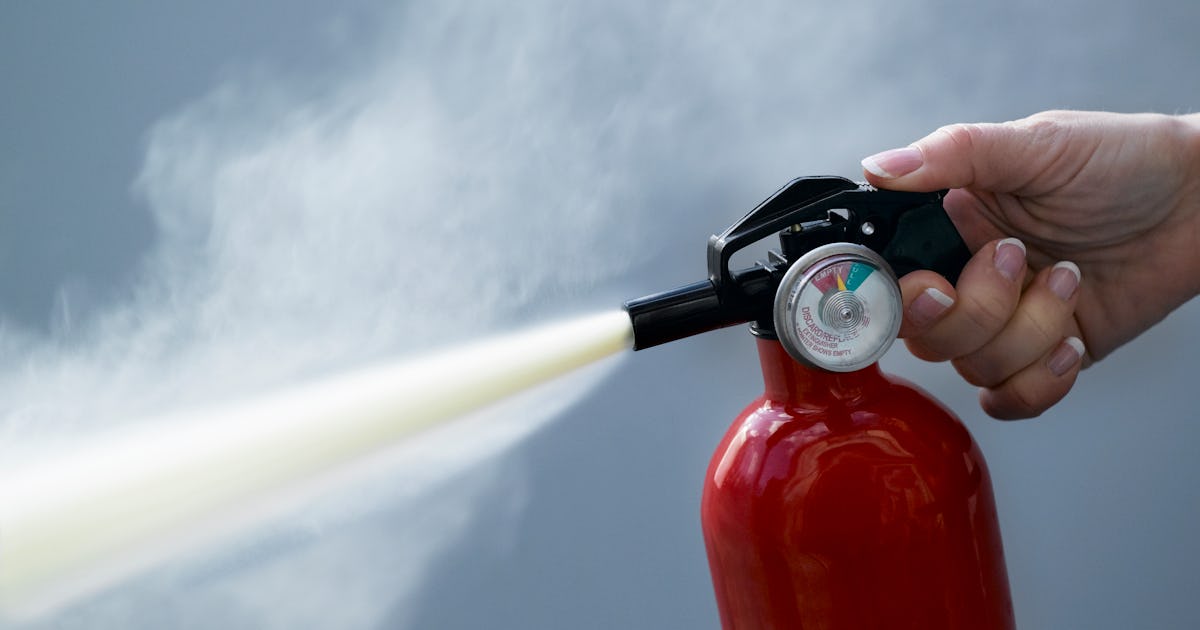As crews continue working to contain the devastating fires throughout Los Angeles County — including the Palisades and Eaton fires — images and news stories about the extent of the devastation are truly heartbreaking.
Homes, communities, and even lives have been lost as Santa Ana winds spread the blazes faster than firefighters can contain them. While the winds have died down in recent days, enabling crews to better control the fire, Los Angeles will continue to grapple with the consequences for months and even years. But while wildfires are more common in the Western states, they are becoming more pervasive — and destructive — globally.
And so, as parents, it’s important to make sure we know what to do in the case of a fire. Not only that, we need to teach our children how to stay safe in a dangerous situation as well.
“This may be common knowledge, but I didn’t think of it until my 4-year-old had a fire drill at school yesterday,” writes Reddit user u/dolien17 on the popular Parenting subreddit.
“After she got done telling me all about it, I realized we never told her what to do if there’s an emergency in our own home. I further realized that it’s not as simple as ‘get outside’ as we have never taught her how to unlock deadbolts. I spent 30 minutes teaching her how to open the deadbolts, use the garage door opener, and how to unlock and open windows. I hate the thought of her having to do these things alone, but thinking about her being alone while my wife and I are incapacitated in an emergency filled me with dread.”
It’s a great point: fortunately, most people will not experience a serious or deadly house fire in their lives. But because this isn’t a regular occurrence, those who do may not be fully prepared or know what to do when they are faced with one. Here’s what you — and your family — should know about staying safe in a fire emergency…
Take preventative steps to keep your house safe
It’s like the old adage: an ounce of prevention is worth a pound of cure. Be mindful that anything that gets hot — electronic devices in addition to the more obvious things like stoves, grills, and space heaters — can create a fire, so there should ideally be at least three feet of space between it and anything that can catch fire. (That’s 10 feet for an outdoor grill, by the way.)
Parents should talk to their children early and often about the fact that fire is dangerous, and be sure to keep matches and lighters out of their child’s sight (ideally locked away). And while life gets chaotic and busy with kids, don’t leave any fires or fire hazards — candles, stovetops, wood fireplaces, toasters, etc — unattended, especially in proximity to your child.
Additionally, well-maintained smoke detectors are a must. Test the alarms once a month, keep them clean (dust or vacuum them), and replace them every 10 years.
Make sure your child knows to get out of the home
Unfortunately, many young children’s instinct in a fire is to hide in the house, like in a closet or under a bed, which can make it difficult for emergency crews to find or retrieve them. It makes sense: kids aren’t super good at logical reasoning before a certain age, and they are likely to retreat to somewhere that makes them feel safe.
The American Academy of Pediatrics recommends having a set fire plan with any children 3 or older and actually practicing with them at least twice a year. Discuss exit points for each room in addition to the house and choose a spot to meet outside. It’s also important that kids know how to call 911.
And, as u/dolien notes in their Reddit post, think through the various steps of getting out that your child might not be aware of, like locks or garage door openers.
“Don’t take your perceived belief of how smart they are into account,” they warn. “Teach them by the numbers step by step. And do it again every month until they can do it without any prompting from you. And make sure you teach them to get themselves out first.”
Check out online resources to make these conversations accurate, easy, and fun
We’re focusing on making sure kids know how to get out of a fire, but there’s a lot more they can learn that will keep them safe, including how to use a fire extinguisher and what to do if you’re in an emergency situation involving fire (including “Stop Drop and Roll”).
Fortunately, there are lots of resources to help families make a plan and stay safe in an emergency from FEMA and the AAP to Sesame Street, and, come on: who doesn’t love Sesame Street?
House fires and environmental disasters like wildfires are incredibly scary, and no amount of training, education, or preparation can change that. But by educating yourself and your family, you can avoid making a bad situation even worse.

